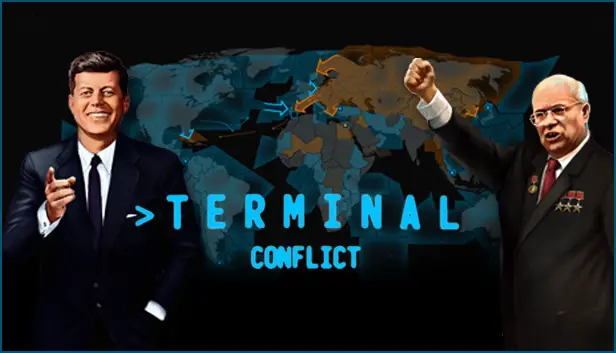The “Cold War”, despite its length is not often the focus of strategy games. In a large part, this is due to the complexity of modeling the multi-dimensional proxy wars between the USA and the USSR and trying to get across the idea of the brinksmanship and mutually assured destruction. Universally lauded board-game Twilight Struggle successfully brought this long-simmering but never quite boiled conflict to new players and Strategy Mill’s Terminal Conflict attempts to follow a similar path.
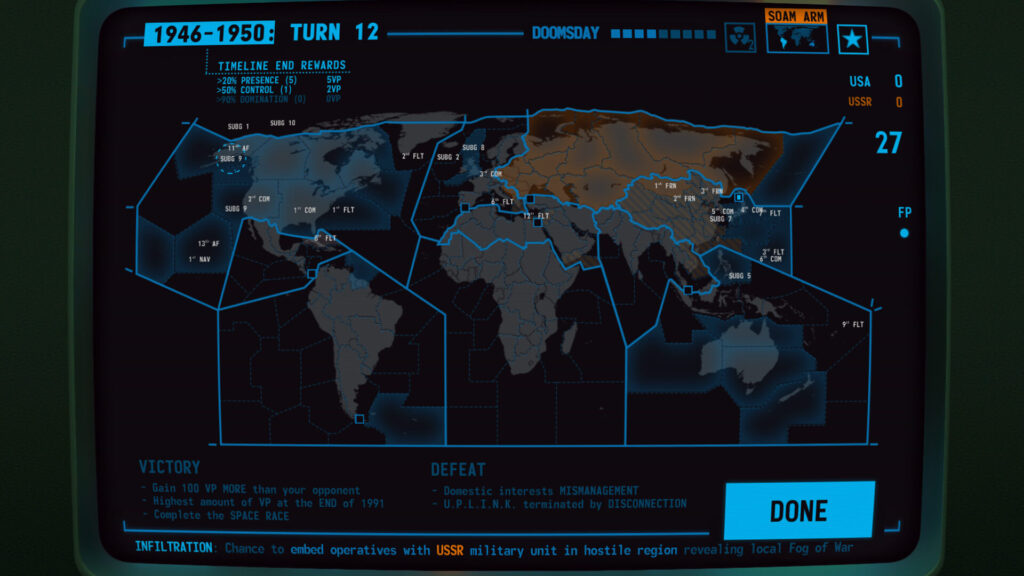
Terminal Conflict pitches the player into the cold war from its beginnings just after the end of the Second World War all the way up to the fall of the Berlin wall. The game features a small suite of tutorials that will brief the player on the game’s stark by design UI and the various units that you’ll employ across the game, from conventional armies to individual leaders and spies. The player is then pitched into the campaign, though there are other options that are unlockable as you go.
The first thing a player will likely notice when playing Terminal Conflict is the game’s intense, hacker-style interface. Cast in blues, greens, and muted oranges, the game uses a lot of text and apes the look of the old DOS-style interfaces. For some players, this will be catnip and for others, this will be hugely off-putting and for everyone else, I suspect it will get an impressed nod of the head.
The game also has its own “friendly AI” to help you out. MIRVIN, introduced during the tutorials, will offer bits of advice and friendly comments as you play and comes across a bit like Wheatly from Portal 2, though not as funny. There’s a subplot in the game about MIRVIN but this doesn’t really feature that heavily into the gameplay.
The game makes use of buttons that have seemingly byzantine codes on them but this is just window dressing as the game makes it very easy to figure out what buttons do what and how to command and control your wide array of units across the world. And make no mistake, in the end, the whole world will be a “battleground”, though it’s best to avoid seeing it turn into a warzone unless you want to see the nukes flying.
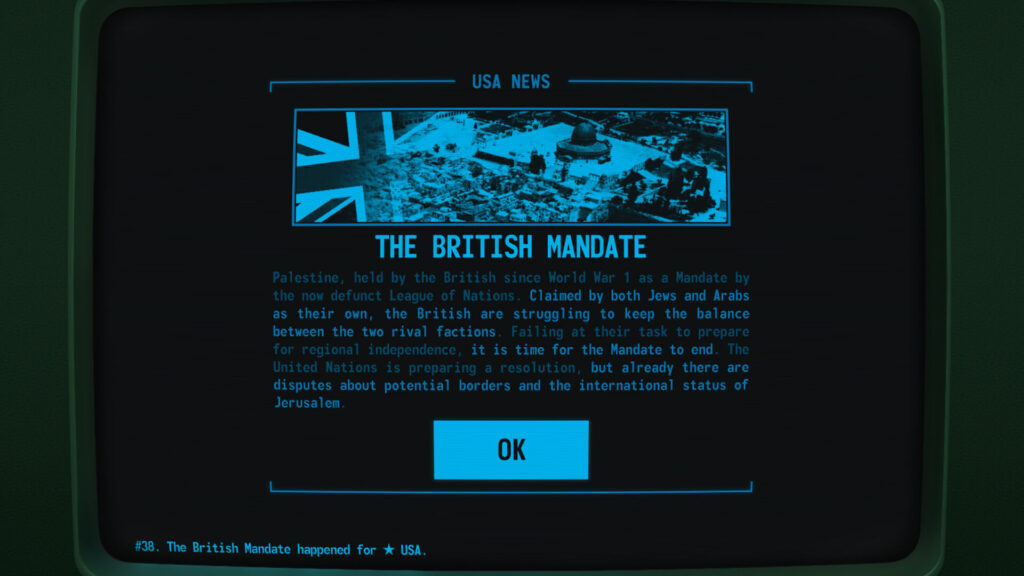
The game’s victory conditions are, broadly speaking, based on accumulating 100 more victory points than the other side or completing the space race. Interesting, there is a way for both players to win if they both survive to the end of 1991, resulting in a mutual minor victory condition, a nice touch.
A big part of running your “Empire” is focus management. A player’s choice of focus will have ongoing effects for the player and potentially zoom the “theatre” into one of the game’s many regions.
A careful choice of focus can render some major advantages to one player so this is an important choice. Players then move and control their units, ranging from huge, unwieldy conventional armies, to stealthy submarines, to various zones of the map, attempting to exert and maintain control.
Where one faction tries to exert influence over a region belonging to another, there is the potential for a warzone to emerge, with both sides units then ending up in combat. Warzones and combat between players can escalate the games “doomsday clock” which can result in a nuclear war if it gets pushed too high.
Of course, the games have scope for non-combat interactions, representing the brinksmanship and probing actions of the faction’s military, such as airspace intrusions or submarines passing through shipping lanes. These do not result in destroyed units, normally, and will sometimes see units reset to a weaker status which means they are less effective until they have a chance to “reorganize”.
The game will also allow the player to build and redeploy units from theatre to theatre, spending one or more of the prime five resources of the game. These need to be carefully balanced as if any of them get too high or too low, they can provoke a crisis within your government.
Combat in Terminal Conflict is very abstract with a sort of rock paper scissors system used to resolve combat. Don’t expect to see the game differentiate between hard-ware types or present OOBs or anything like that, units are abstract and the game doesn’t really focus on this sort of thing. Players have the option to cool the temperature in the game too by ordering disarmament in a region, reducing the global tension, sometimes at the cost of losing control of the region.
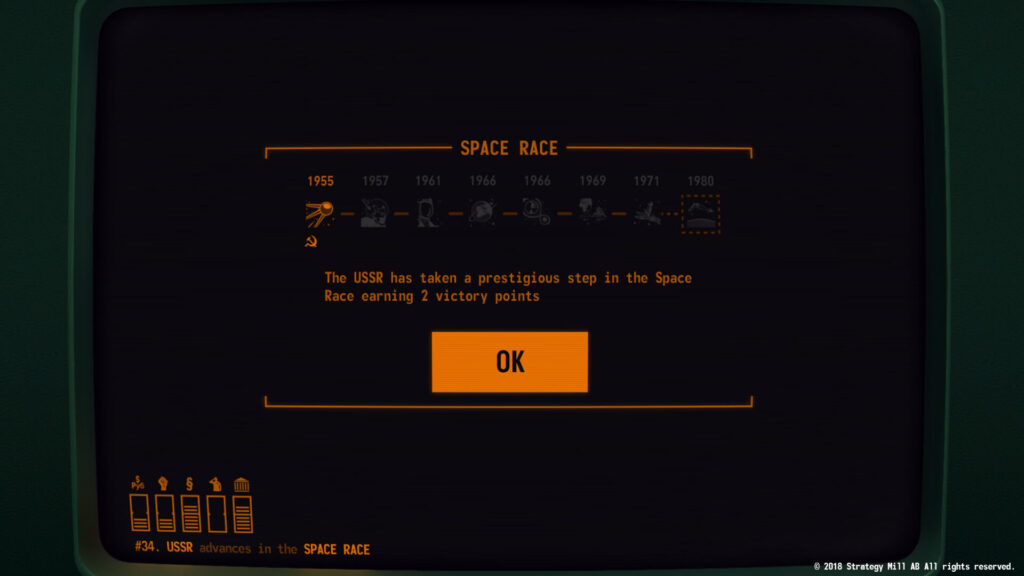
The game has a full technology and research system, largely based around improving your nuclear capabilities, and falling behind in this nuclear arms race can be very dangerous and embolden your opponent. The game really shines, however, in its intelligence game. The Cold War was a period where spies and counter-intel were vital and you can use various intelligence missions to weaken your opponent or gain information that will make your other operations more successful.
Terminal Conflict is a complex, deep, and hugely engaging game. You’ll need to juggle a huge number of variables and make plans, rather than react and a player who is constantly on the defensive will certainly be likely to lose the game. The game offers a player a dizzying array of tools to take on their opponent and with the semi-randomized nature of the game with its focuses, you’re unlikely to see the gameplay out the same way twice across the long and deep campaign that features a nice blend of real historical and fictional events.
The game isn’t without its flaws, however. One of them is, paradoxically, one of its great strengths too. The game is subtle and nuanced and at times can seem almost byzantine with how it operates. A new player may well find themselves unsure of what to do and whilst the tutorial explains how do most of the things you’ll need to do in the game, it doesn’t do such a great job of explaining why. A player will likely need the game’s manual open whilst playing for the first few times and may wish to visit their preferred “Let’s Play” vendor to see how the game works.
Terminal Conflict has a fairly steep learning curve and whilst the AI is not very smart, the game does present certain challenges. The game is already more approachable than it used to be and there are promises of more features to “hand hold” a player into the game, which is good to hear.
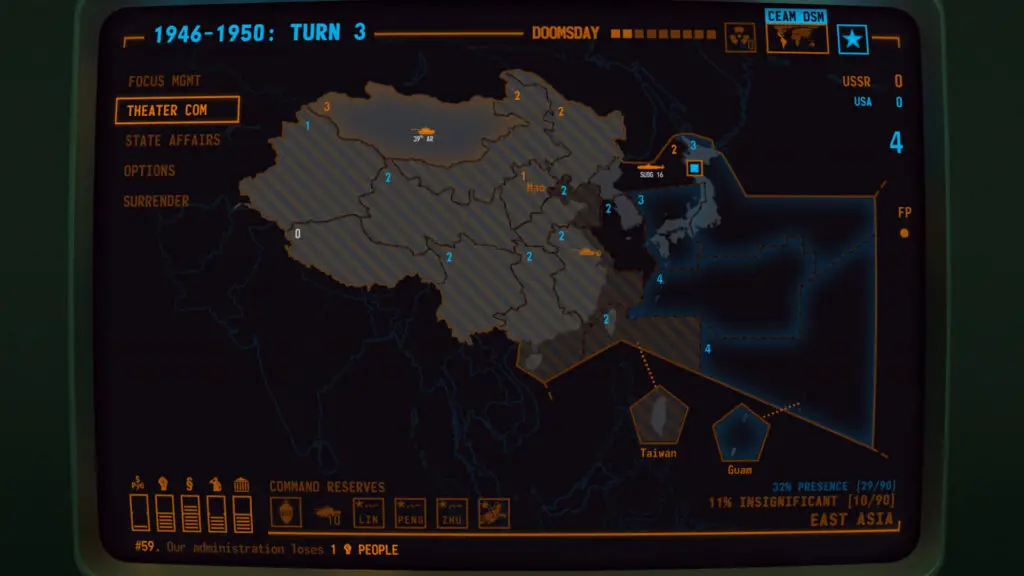
The game’s stark visual style may also put some players off. As someone with eye-sight issues, I found it easy enough to see what is on the map and the UI and graphics hugely add to the theme. The game’s atmosphere is intense, with well-chosen music adding to the sense of place and the tension.
Whilst I haven’t played multi-player, the word is that it plays very well, offering a deep and rather intense game for two players and another person will offer more of a challenge than an AI.
Terminal Conflict is out of early access and has a handful of DLCs and there is definitely scope for more. The space race element of the game is still quite underplayed and more like a “track” than a real game module in its own right and there may be scope to make this another nuanced battlefield for the players to contest.


